
Community Meeting Recap: June 3, 2025
On June 3rd, the first community meeting was held to introduce the Coming Street Commons project to the community.
Meeting Recording
The first community meeting for the Coming Street Commons project took place on June 3rd. The project team, joined by members from the College, engaged participants from neighboring communities, YWCA friends, supporters, and community members to discuss the project. Watch the recording and view the PowerPoint presentation to hear what was shared.
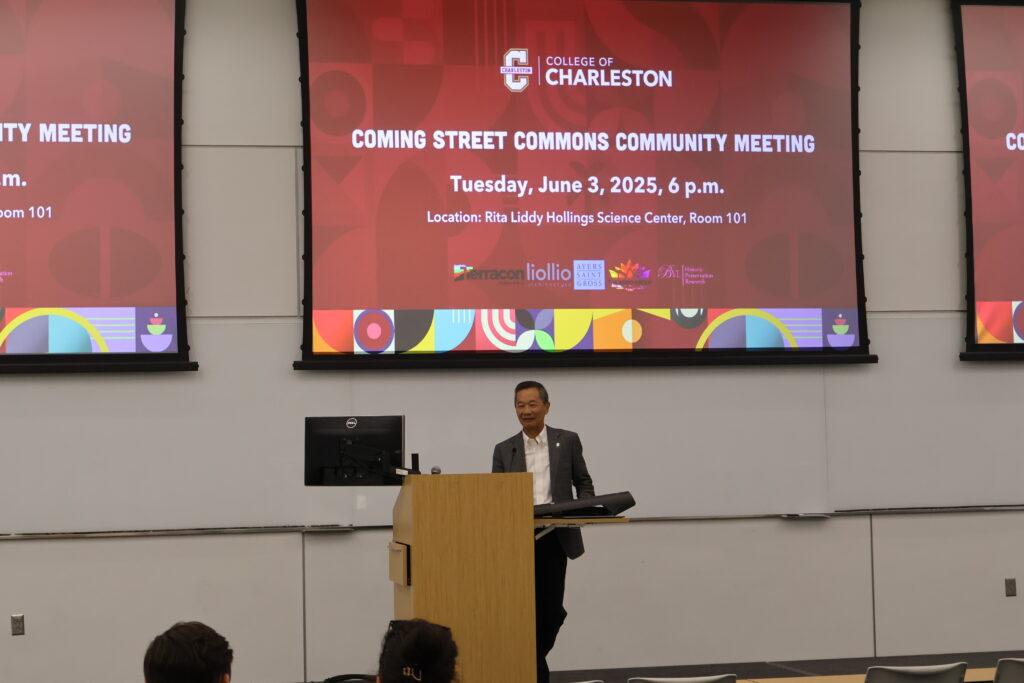
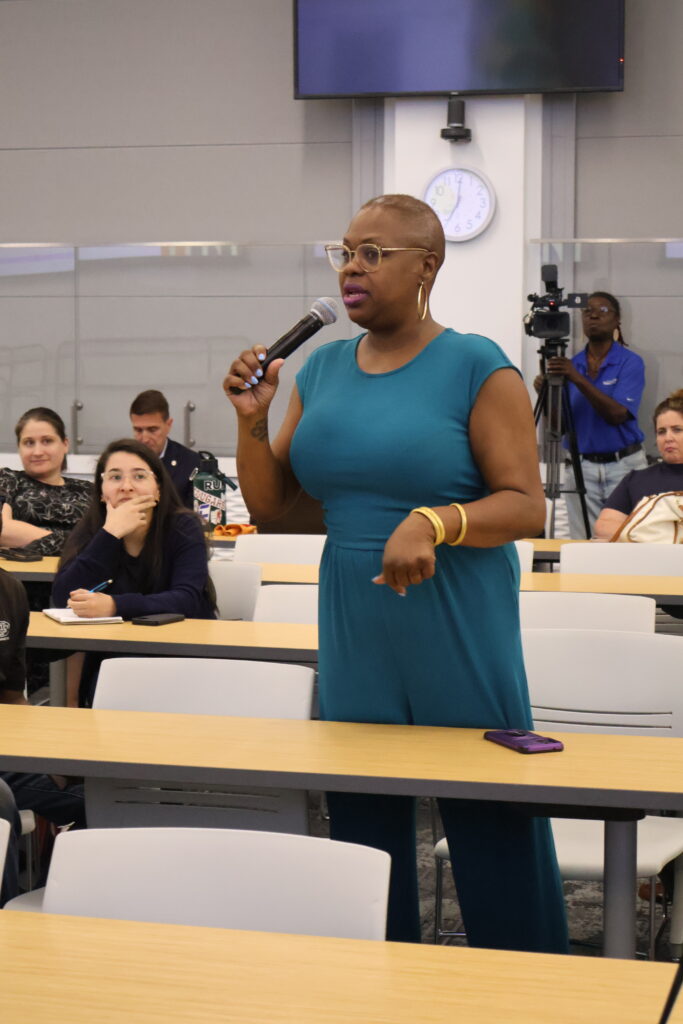
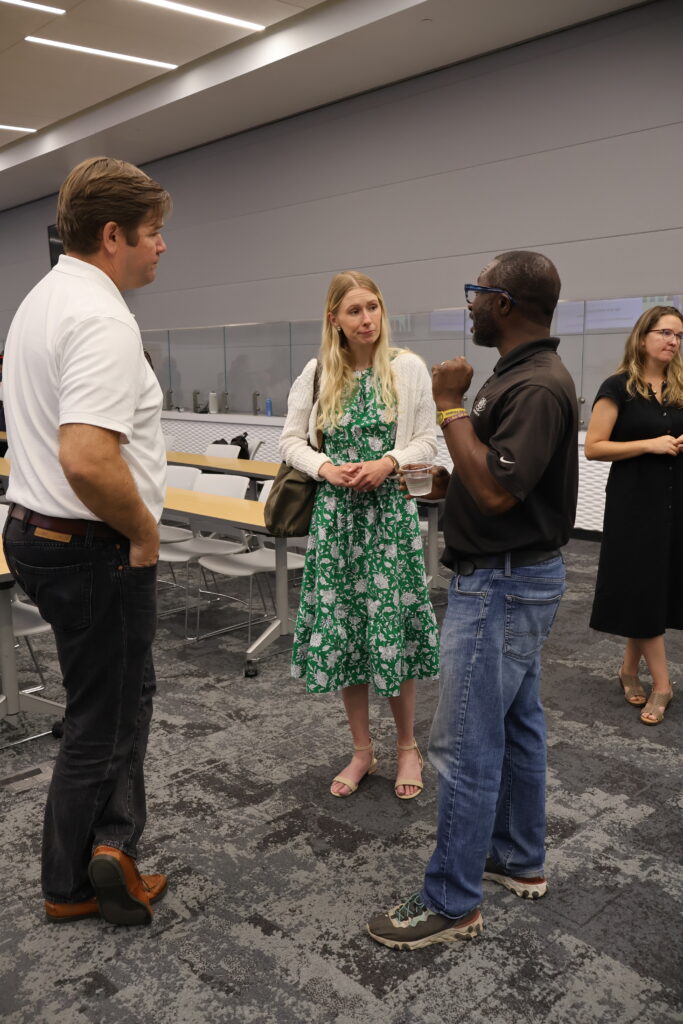
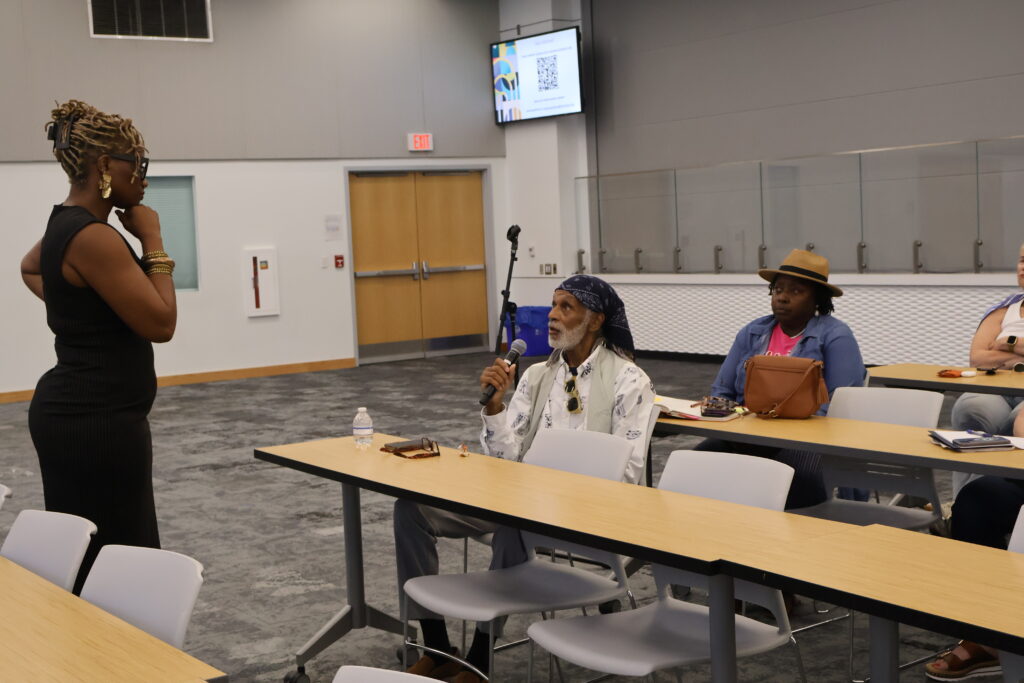
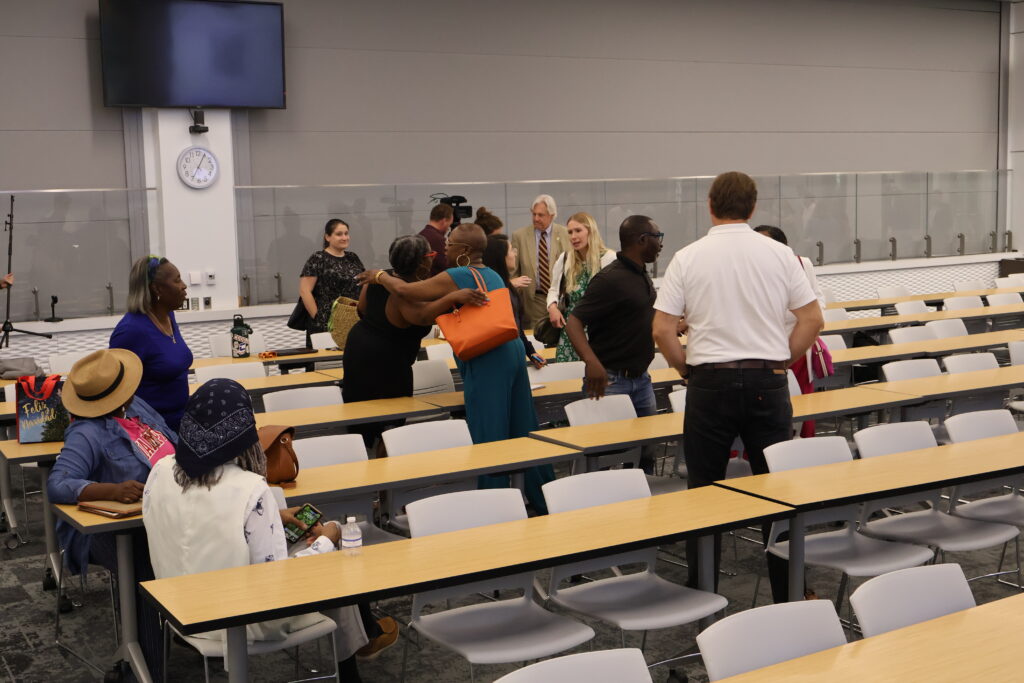
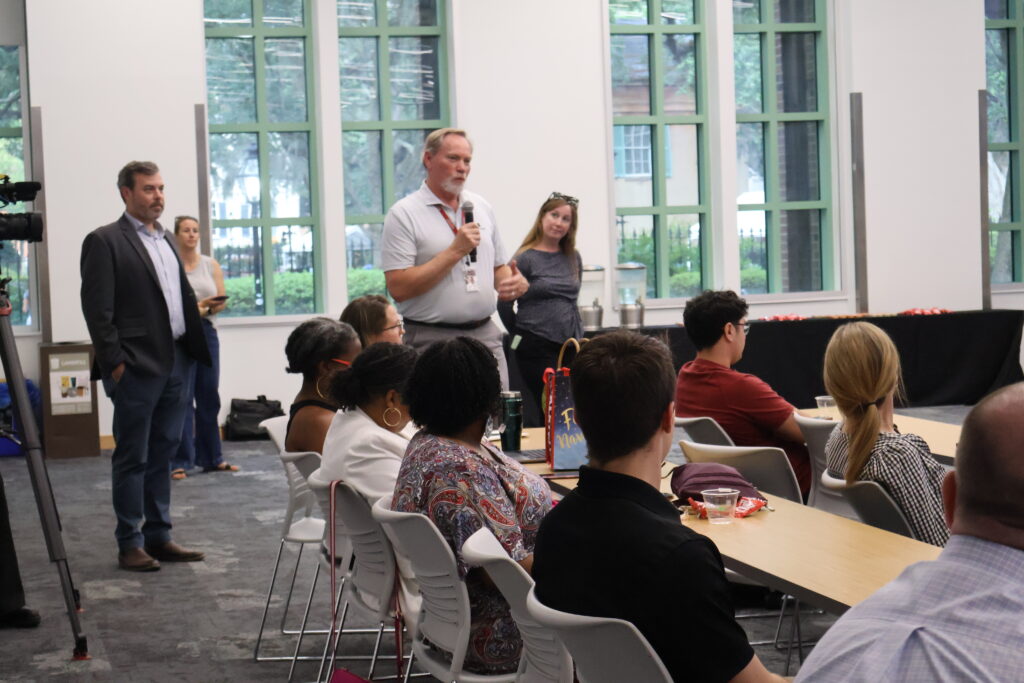


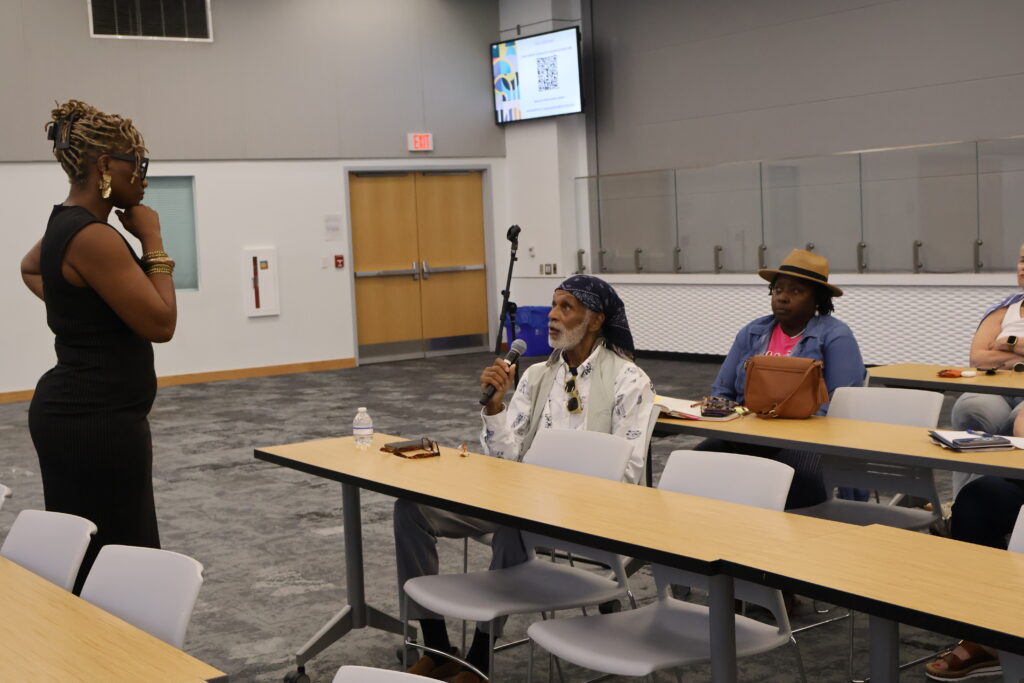

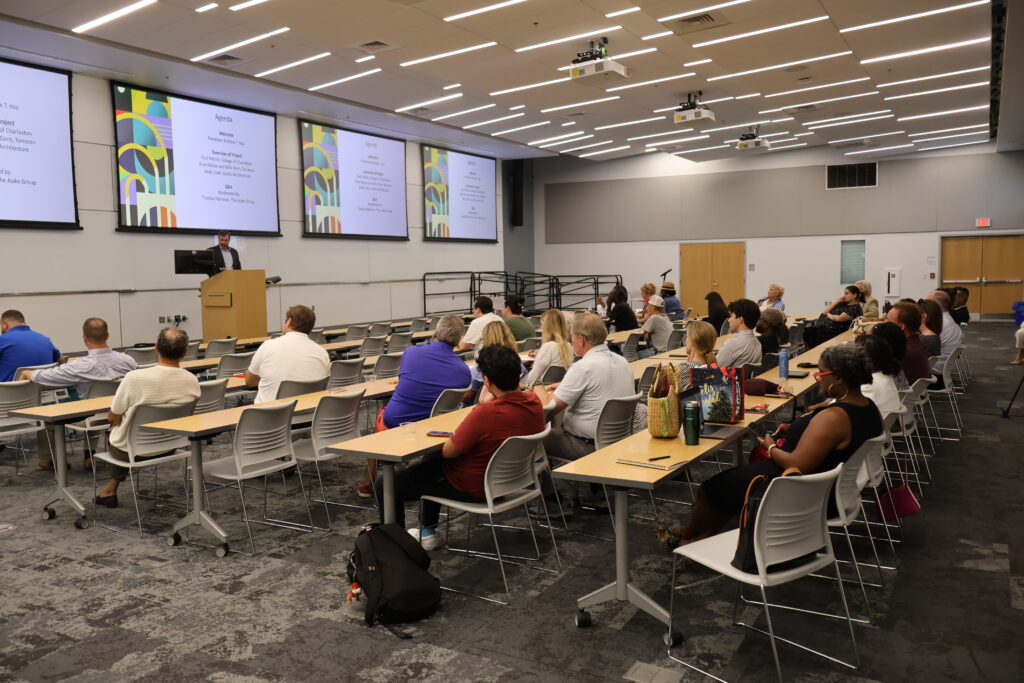
Meeting Questions & Answers
Questions asked by attendees at the June 3rd public meeting. Answers created from responses given by College of Charleston, Liollio, Terracon, and The Asiko Group during the June 3rd public meeting.
Q: Given the construction happening around the campus and around Charleston, is there any consideration being given to the inclusion of Gullah-Geechee art, African American art, or Native American art in the design of the residence hall?
A: The vision for the project is to hear stories from community members to inform how to tell the history of the site in the building design.
Q: What is the plan for where the human remains will go?
A: The reinternment process requires input from state and local authorities which have not been engaged through the current phase of the project. This work is forthcoming and will be made public through the community engagement process.
Q: What will be the impacts to residents involving construction equipment, parking, and managing traffic on Coming St. and Calhoun St.?
A: The site will be fenced off and all equipment and materials will be contained within the construction site. The College will work with the construction contractor to manage deliveries, which will most likely be on Coming Street, and minimize any activity that obstructs the public right of way as the project continues throughout the site preparation, foundation work, and building construction. Hours of construction will operate within City regulations. Construction downtime will be included around the time of exams to minimize disturbance to students. The College will work with neighbors to minimize impacts to the neighborhood’s quality of life throughout the duration of construction.
Q: What was the College’s justification for the demolition of the YWCA building at the June 11th BAR-L meeting?
A: While the site is important because of the YWCA’s work there, the building is not architecturally meritorious. Beyond demolition, what the commemoration of the YWCA building will look like will not be decided in a vacuum – it will come from engagement with the YWCA leadership and the community members they historically and currently represent.
Q: What is the plan to publicize and house the oral histories connected to the site, especially related to African American history and the Civil Rights Movement, and create public space within Coming Street Commons residence hall?
A: BVL Historic Preservation Research created a report on the history of the Coming Street YWCA, which will be shared on the website and in project communications. We will continue to have public meetings with the community to hear feedback on how best to preserve and amplify this history, and work with the YWCA Greater Charleston to determine where historically significant artifacts and information will be housed.
Q: Have Ms. Christine Jackson and her daughter Kim been made aware of the project?
A: The project team continues to communicate with YWCA leadership, including longtime director Ms. Christine Jackson, about how they may contribute to the project.
Commons questions likely to be asked. Answers created from remarks given by College of Charleston, Liollio, and Terracon during the June 3rd public meeting.
Q: What are the benefits of on-campus student housing for students?
A: Students who live on campus have higher retention rates, graduate on time, and have higher GPAs. This is especially true for freshman and sophomore students.
Q: Why is this residence hall so dense?
A: It is a better financial decision to build where there can be enough density that the land costs and construction costs make sense. Densifying residence halls helps to reduce on-campus housing expenses for students, while helping the College finance the debt borrowed to build the residence halls. This project also helps to neutralize the risk of leases associated with other properties, such as Warren St. residence hall.
Q: When and how did the College of Charleston acquire 106 Coming St.?
A: The YWCA first sold the 106 Coming St. parcel in 2015. The College of Charleston was interested in bidding to purchase the land, until it no longer became viable for the College to contend and the property was purchased by other individuals. They began building the condominium complex containing 200-250 beds at 99 St. Philips St. The College was eventually able to acquire the 99 St. Philips St. and 106 Coming St. parcels as of early 2025, amounting to approximately 2 acres for the Coming Street Commons residence hall. Together, the two residence halls will house approximately 1,200 students. The building at 99 St. Philip St. began housing students in fall 2023.
Q: What is the timeline for this project?
A: The College is already in the process of seeking zoning approval from the City of Charleston. The YWCA building demolition application was approved at the June 11th Board of Architectural Review (BAR-L) meeting. Upon approval, Terracon will complete the DES permitting process with the State Historic Preservation Office for ground disturbance and the site will be prepared for proper commemoration of the YWCA. There will be 6-8 months of excavation work to properly reinter any human remains buried there. The College will seek approval from the BAR for Phase I construction and approval from the state for Phase II, once the design and cost estimates are complete. After this is complete, the foundation will be prepared for vertical construction. If the project proceeds forward without delay, the first set of 550 beds will be online as of August 2028, and the remaining beds will become available as of August 2029. Public meetings and stakeholder meetings will occur throughout the duration of the project to inform the community on the project’s progress and receive input on next steps. See the project timeline for more information.
Q: How will the cultural significance and architectural history of the YWCA building be studied?
A: Terracon will assess the significance of the building in local history, state history, and national history. They will create a historical narrative about how the YWCA influenced the Charleston community locally and how key figures and members of the YWCA were influential in the Civil Rights Movement. The structure and landscape will be described in-depth alongside a current conditions assessment of the building. Significant architectural elements of the building will be salvaged, such as bronze plaques located on the front of the building that describe the history of the YWCA. The interior mural will be preserved through a high-resolution scan.
Q: If human remains are found in the Potters Field, how will they be handled?
A: After the YWCA building and associated concrete are removed, along with any hard surface below it, a ground penetrating radar (GPR) survey will be performed to determine if there are burials on the site, where they are located, and how deep they are. The soil will be slowly removed by professional excavators to see the interface between sterile soil and disturbed soil, in order to see the grave shafts. Two teams of two people will work on removing each burial systematically and scientifically. If human remains are present, a certified funeral director will be consulted to determine if they have the facilities and capacity to securely keep the human remains, as well as where the human remains will be reinterred. Mapping results of what was found and the historical background of the municipal cemetery will be included in a report. The project will include an on-site secure lab and privacy fencing to protect the sensitivity of the site.
